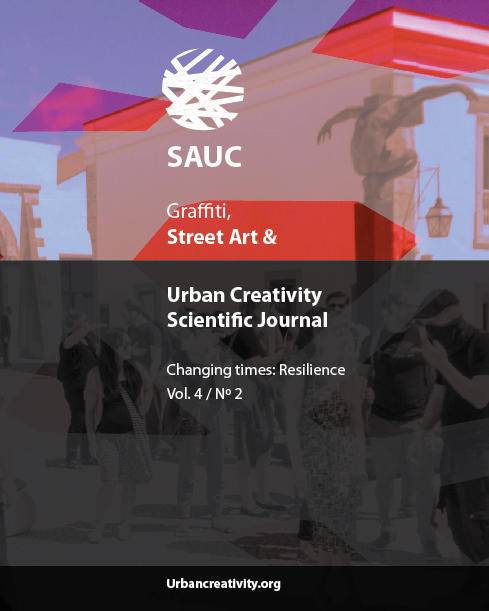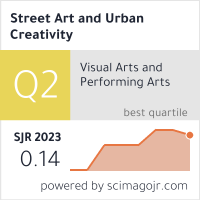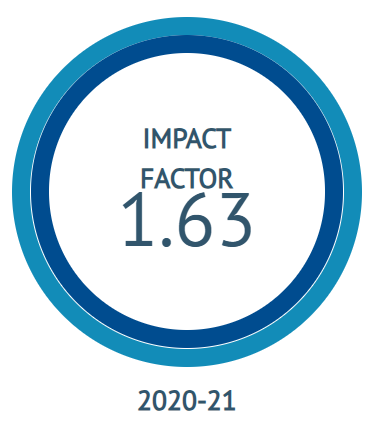Resilience and adaptability through institutionalization in graffiti art:
A formal aesthetic shift
DOI:
https://doi.org/10.25765/sauc.v4i2.140Palabras clave:
institutionalization, aestheticization, graffiti, graffiti art, white cube, institutions, neutralization, censorship, formal aesthetic shift, resilience, adaptability, urban references, tag, style writing, graffiti code, abstractionResumen
The subject of this paper is the institutionalization of graffiti art. It examines the contextual and formal aesthetic shifts of graffiti within the urban space to graffiti art exhibited in art institutions. The goal of this paper is to demonstrate the adaptability and resilience of graffiti art within an institutional framework conducted by formal aesthetic shifts within the art works. Graffiti is always in the verge of the institution and seems challenging to integrate into the institutionalized framework. The significance and contextual change entering the white cube causes several effects such as neutralization, aestheticization and censorship. A formal aesthetic shift based within the art works will be demonstrated by five detailed analyses. Finally, further effects such as reduction and abstraction processes as well as aestheticization and autonomy of the art works will be observed.
Descargas
Estadísticas globales ℹ️
|
164
Visualizaciones
|
0
Descargas
|
|
164
Total
|
|
Descargas
Publicado
Cómo citar
Número
Sección
Licencia
Los autores/as que publiquen en esta revista aceptan las siguientes condiciones:
- Los autores/as conservan los derechos de autor.
- Los autores/as ceden a la revista el derecho de la primera publicación. La revista también posee los derechos de edición.
- Todos los contenidos publicados se regulan mediante una Licencia Atribución/Reconocimiento-SinDerivados 4.0 Internacional. Acceda a la versión informativa y texto legal de la licencia. En virtud de ello, se permite a terceros utilizar lo publicado siempre que mencionen la autoría del trabajo y a la primera publicación en esta revista. Si transforma el material, no podrá distribuir el trabajo modificado.
- Los autores/as pueden realizar otros acuerdos contractuales independientes y adicionales para la distribución no exclusiva de la versión del artículo publicado en esta revista (p. ej., incluirlo en un repositorio institucional o publicarlo en un libro) siempre que indiquen claramente que el trabajo se publicó por primera vez en esta revista.
- Se permite y recomienda a los autores/as a publicar su trabajo en Internet (por ejemplo en páginas institucionales o personales), una vez publicado en la revista y citando a la misma ya que puede conducir a intercambios productivos y a una mayor y más rápida difusión del trabajo publicado (vea The Effect of Open Access).













